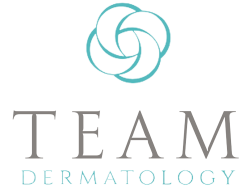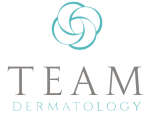Effective Treatments for Basal Cell Skin Cancer

Overview of Basal Cell Skin Cancer
Basal cell skin cancer (BCC) is the most common type of skin cancer, accounting for about 80% of non-melanoma skin cancers. It originates in the basal cells, which are located in the lowest layer of the epidermis. Although BCC grows slowly and is unlikely to metastasize, early detection and treatment are crucial to prevent extensive tissue damage.
Causes
The primary cause of BCC is prolonged exposure to ultraviolet (UV) radiation from the sun or tanning beds. UV radiation damages the DNA in skin cells, leading to abnormal cell growth. Other risk factors include fair skin, a history of sunburns, excessive sun exposure, age, and a family history of skin cancer.
Symptoms
BCC typically appears as a pearly or waxy bump, often with visible blood vessels. It may also present as a flat, flesh-colored, or brown scar-like lesion. Some BCCs bleed, scab, or form a crust and may not heal over time.
Diagnosis
Diagnosis begins with a thorough skin examination by a dermatologist. If BCC is suspected, a biopsy is performed to confirm the diagnosis. During a biopsy, a small sample of the suspicious tissue is removed and examined under a microscope.
Non-Surgical Treatments
Non-surgical treatments for BCC are generally used for superficial lesions or in cases where surgery is not feasible.
Topical Medications
Topical treatments like imiquimod and fluorouracil are used to treat superficial BCCs. Imiquimod stimulates the immune system to attack cancer cells, while fluorouracil is a chemotherapy cream that targets and destroys abnormal skin cells. These treatments are applied directly to the lesion for several weeks.
Cryotherapy
Cryotherapy involves freezing cancer cells with liquid nitrogen. This treatment is typically used for small, superficial BCCs. The extreme cold destroys the abnormal cells, causing the treated area to blister and eventually fall off.
Photodynamic Therapy (PDT)
PDT uses a combination of a photosensitizing agent and a special light source to destroy cancer cells. The agent is applied to the skin and absorbed by cancer cells, which are then exposed to light, activating the agent and killing the cancer cells. PDT is effective for treating superficial BCCs.
Surgical Treatments
Surgical treatments are the most common and effective methods for removing BCC, especially for deeper or more aggressive lesions.
Excision
Excision involves cutting out the cancerous tissue along with a margin of healthy skin to ensure complete removal. The wound is then closed with stitches. This method has a high cure rate and is suitable for most BCCs.
Mohs Surgery
Mohs surgery is a precise technique used to remove BCC layer by layer. Each layer is examined under a microscope until no cancer cells remain. This method minimizes the removal of healthy tissue and is especially useful for BCCs in cosmetically sensitive areas, such as the face. Mohs surgery has the highest cure rate of all treatments for BCC.
Curettage and Electrodesiccation
This technique involves scraping away the cancerous tissue with a curette (a sharp, spoon-shaped instrument) and then using an electric needle to destroy any remaining cancer cells and control bleeding. It is typically used for smaller, less aggressive BCCs.
Preventative Measures and Aftercare
Preventing BCC involves protecting the skin from UV radiation and monitoring for early signs of skin changes.
Preventative Measures
- Sun Protection: Use broad-spectrum sunscreen with an SPF of 30 or higher, wear protective clothing, and seek shade during peak sun hours.
- Avoid Tanning Beds: Tanning beds emit UV radiation that can increase the risk of skin cancer.
- Regular Skin Checks: Perform monthly self-examinations to detect any new or changing lesions. Visit a dermatologist annually for a professional skin check.
Aftercare
Post-treatment care is crucial for healing and preventing recurrence:
- Wound Care: Follow your doctor’s instructions for wound care after surgery or non-surgical treatments. Keep the area clean and protected.
- Follow-Up Appointments: Attend all scheduled follow-up appointments to monitor for any signs of recurrence or new skin cancers.
- Healthy Lifestyle: Maintain a healthy lifestyle with a balanced diet, regular exercise, and avoiding smoking, which can aid in overall skin health.
Conclusion
Basal cell skin cancer, while common and generally non-lethal, requires prompt and effective treatment to prevent tissue damage and recurrence. By understanding the available treatments, including non-surgical options like topical medications, cryotherapy, and photodynamic therapy, as well as surgical methods such as excision, Mohs surgery, and curettage with electrodesiccation, patients can make informed decisions about their care. Preventative measures and diligent aftercare are essential in maintaining skin health and preventing future occurrences. If you notice any suspicious skin changes, consult a dermatologist promptly for evaluation and treatment.

